KC COLUMN: LISTEN, BUD, HE’S GOT RADIOACTIVE BLOOD!
by KC Carlson
A recent storyline in Amazing Spider-Man (ASM) jumped out at me, reminding me that I’ve been remiss in not talking about this great comic series. It’s become a bit of an underdog at Marvel, fighting for attention from the X-books and Avengers titles and their ongoing event-driven storytelling.
ASM is no stranger to event stories — the recent Spider Island event was a wonderful, heroic, sinister, and wildly amusing Tilt-a-Whirl of expectations met and status quo upheaval that reinvigorated the series without being obvious about it. Granted, not everything was great about Spider Island. A couple of the tie-ins didn’t really integrate well, and I still think the title is weird, albeit descriptive. Still, it was heads and tails better than the concurrently running Fear Itself, which collapsed under the weight of its reaching-too-far storylines and too many crossovers, and the weird vibe of everything seemingly being undone in the epilogues. At least that had fantastic art by Stuart Immonen and Wade Von Grawbadger.
The Spidey story that caught my eye wasn’t one of the regular epic battles with a major Spider-foe, nor an angsty confrontation with the devil over personal history. In fact, in another era, it might be called a day-in-the-life story — a type of storytelling where there aren’t any major hero/villain fights, nor much conflict at all. These were stories about what happened on a “normal” day in the life of our superhero.
[“A Day in the Life” also became a much-abused cliché. I still very much remember the early 1990s DC Editorial Meeting where Mike Carlin actually screamed at us editors to stop commissioning them. “They can’t all be day-in-the-life stories! Somebody’s gotta punch somebody!” ]
This particular Spidey story wasn’t just another day-in-the-life story — although it takes place over an approximate 24-hour period. It’s also a first-class “puzzle story” of the type that frequently came out of the Julius Schwartz editorial office over at DC Comics in the 1960s and 70s. And it’s fairly obvious that Spidey writer Dan Slott was subconsciously channeling John Broome big-time that month. The story in question? “I Killed Tomorrow” in Amazing Spider-Man #678 and 679.
OBLIGATORY SPOILER-FREE SYNOPSIS
Peter Parker, after a sweet character-building intro (where he runs into an old (old) girlfriend, nice touch), heads to his job at Horizon Labs, where he’s been assigned to “double check duty” for one of his more unusual colleagues, Grady Scraps. (BTW, “double check duty” is basically checking their math so that “they don’t pull a ‘Victor Von Doom’ and blow their face off” — another nice reference.) Grady has invented something he calls the Doorway to Tomorrow!, which he has installed on the doorway to Horizon’s break room. To demonstrate, he steps through, and seconds later returns with… tomorrow’s Daily Bugle. Peter, wanting to check this out, steps through the doorway — but he doesn’t step into the benign future that Grady encountered. Instead, he sees all of NYC violently destroyed, with everyone dead. He also discovers a partially destroyed analog watch — with its hands frozen at the time the city was destroyed, 3:10.
The un-ticking watch ironically becomes a symbolic ticking clock as Peter (and Grady and the enigmatic Madam Web) attempt to figure out how to prevent that particular timeline/mass destruction from ever happening. It becomes increasingly obvious that something Spidey did (or didn’t do) triggered the catastrophe. BTW, ASM #678 offers up a great subtle joke by changing the usual “The World’s Greatest Super Hero!” logo blurb to “The World’s Worst Super Hero!” for this issue only.
TIME IS A CONCEPT BY WHICH WE MEASURE OUR FUN!
What follows are two issues of Slott dealing deftly with all the usual time travel paradoxes and ephemera — this time completely understandable to even dummies like me — seasoned with plenty of Slott’s trademark humor, while just piling on the suspense. Case in point, Slott pulls an amazing cliffhanger-resolution stunt that had me howling with nervous laughter, and then he immediately drops another dramatic game changer just two pages later. Part Two also offers up more complications with Silver Sable, Flag Smasher, and a certain redhead (who’s not seen enough in ASM these days). Then Slott adds the perfect button to the story in the very last panel.
The artwork for both issues is by Humberto Ramos and Victor Olazaba. It’s brilliant — but not so spectacular that it overwhelms the story. You’d think that Ramos’ modern angularity would be a distraction, or inappropriate in a character whose style has traditionally been slick — John Romita, John Byrne, Todd McFarlane — or earthbound — Steve Ditko, Sal Buscema, Ross Andru — but somehow it works. These days, I look forward to Ramos’ frequent appearances on the title.
OVERALL…
So, a big thumbs-up to Amazing Spider-Man overall. This story is just the latest example of how well Slott has been handling a long-running character who seems fresh again. Starting with “Big Time” in ASM #648, Slott went solo on the book after being a part of the Webheads writers collective that was responsible for the previous 100 issues, and such great stories as the villain-building “The Gauntlet”, “Shed”, and “Grim Hunt” — with the latter being a sequel to the popular “Kraven’s Last Hunt” story from 1987.
It’s hard to believe that this was the series that most everyone wanted to quit after 2007’s “One More Day” storyline ham-fistedly changed (reset?) the ongoing continuity of the series. Many did quit. But in the five years since (with well over 100 issues produced on an accelerated — now the “norm” — schedule), a small legion of talented writers and artists have rallied the book back to greatness.
Obviously, a lot of “comic book time” has passed in ASM, but the book has survived decades of clones, wars (secret or not), lost relationships, death and resurrection, cosmic stuff, stupid stuff, creepy sexual stuff, and even Spidey literally turning “dark” (or at least his costume). Most of that is gone now, and the book has a wonderfully unique identity — being true to the angsty “fun” and ever-changing relationships of the Lee/Ditko/Romita era, updated with powerful modern-era storytelling.
A lot of this, I think, has to do with its editor, Steve Wacker. One of the few current comics editors who is actually allowed to have a public personality (mostly as seen through The Amazing Spider-Mail, the regular Spidey lettercol), Wacker has done an excellent job of keeping the books on schedule two or three times a month for the last five years, as well as coordinating the dozens and dozens of creators needed to produce 24-36 on-time issues a year (plus minis and Annuals). He learned how to do that by editing the white-knuckle-ride that was DC’s 52, before Marvel hired him away (mid-52) to be the Spidey wrangler. While he was at DC, he was also one of the Legion of Legion of Super-Heroes Editors. (So he knows the secret handshake.) He also knows quirk when he sees it and is smart enough to encourage it in the books he edits.
Wacker’s Spidey letter columns are throwbacks to old-style lettercols. He makes fun of himself, playfully berates his assistant de jour, runs lots of letters from little kids, service men and women, returning Spidey readers, and especially new Spidey readers — because as a good editor, he knows a fan seeing his or her name in print will probably make them a comic book fan for life. It’s one of the best lettercols out there. (Sadly, there’s not much competition. Hopefully that will change soon. I note that more and more Marvel books now have regular lettercols.)
MORE THAN SPIDEY
Wacker’s also editorially responsible for the current Daredevil series by Mark Waid and Paolo Rivera — another high-energy yet humorous corner of the Marvel Universe. If, somehow, you haven’t been reading this series (and why not?), I’d suggest starting with Daredevil #7 — a great “done-in-one” issue that has garnered a lot of attention (and hopefully some upcoming comics awards this summer). Yes, it’s that good. Plus, the title just crossed over with ASM (Big Fun reads!) and will again in a couple of months, with The Punisher as referee.
Seeing Amazing Spider-Man (and Daredevil) back on an increasing number of must-read lists is incredibly heartening. Marvel Comics: Not just mutants and Avengers and guys with guns! (…but they’ve got those too!)
KC CARLSON ASKS: Where are the New 52 lettercolumns? Are there no letter writers in that new universe? DC was doing so well reintroducing lettercols in the “old” DCU — then, SKRAK! — cut off at the knees for crappy (and needlessly repetitive and lazy) promo pages (aka ADS!). Phooey!
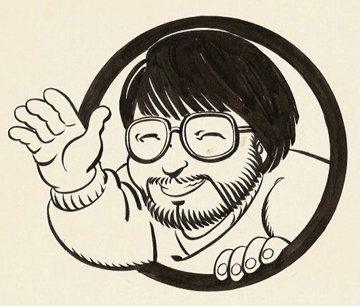

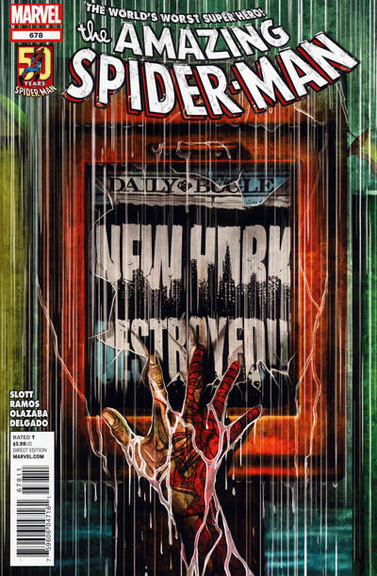
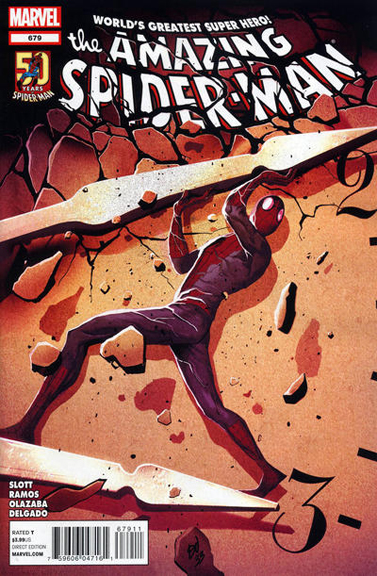

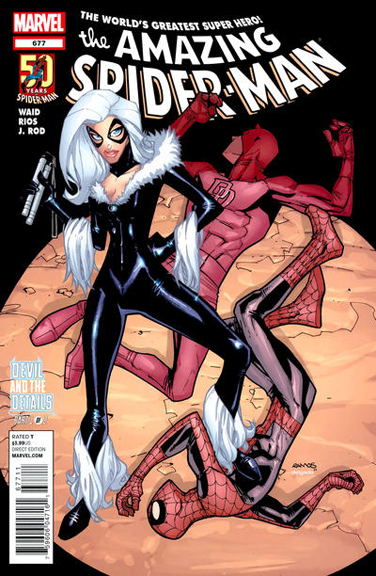
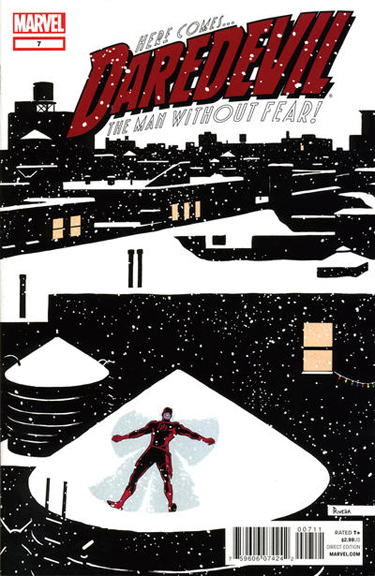
USER COMMENTS
We'd love to hear from you, feel free to add to the discussion!